A Simple Hair Care Routine: What Should My Hair Routine Be?
Do you ever find yourself asking, "What should my hair routine be?" or wondering, "What should a hair routine look like?" If you've been searching for a straightforward and easy-to-follow hair care routine that you can share with friends and family, you're in the right place. In this blog post, we'll walk you through a weekly and monthly hair care routine that will leave your hair looking its best without requiring a lot of time or effort.
Do you ever find yourself asking, "What should my hair routine be?" or wondering, "What should a hair routine look like?" If you've been searching for a straightforward and easy-to-follow hair care routine that you can share with friends and family, you're in the right place. In this blog post, we'll walk you through a weekly and monthly hair care routine that will leave your hair looking its best without requiring a lot of time or effort.
Why a Hair Care Routine is Essential
Before we dive into the details, let's understand why having a hair care routine is crucial. Just like any other part of your body, your hair needs consistent care to maintain its health and beauty. A well-thought-out routine can help prevent damage, promote growth, and keep your hair shiny and vibrant.
Weekly Hair Care Routine:
1. Rosemary Oil on Scalp:
- Start your week by applying rosemary oil to your scalp. This natural oil is known for its hair-strengthening properties and can help improve blood circulation to your hair follicles.
2. Shampoo:
- Use a mild, sulfate-free shampoo to cleanse your hair thoroughly. This will remove dirt and excess oil while being gentle on your hair.
3. Skip Conditioner:
- For your weekly routine, skip using conditioner to avoid product buildup. Conditioner can be used sparingly during your monthly routine.
4. Towel Dry:
- Gently towel dry your hair to remove excess moisture.
5. K18 Repair Mask:
- Apply the K18 Repair Mask to your hair. This mask is designed to repair and strengthen damaged hair, leaving it looking healthier.
6. Detangle:
- Carefully detangle your hair using a wide-tooth comb to prevent breakage.
7. Leave-In Conditioner:
- Apply a leave-in conditioner to keep your hair hydrated and manageable.
8. Heat Protector:
- Before using any heat styling tools, make sure to apply a heat protector to shield your hair from damage.
9. Blow-Dry and Style Accordingly:
- Blow-dry your hair and style it as desired. Use heat styling tools sparingly to prevent excessive damage.
Monthly Hair Care Routine:
1. Brush Using Boar Bristles:
- Use a brush with boar bristles to distribute natural oils evenly and promote scalp health.
2. Rosemary Oil on Scalp:
- Like in your weekly routine, apply rosemary oil to your scalp to boost hair growth.
3. Castor Oil Treatment:
- Apply castor oil to your hair and scalp and leave it on for 1-2 hours. This treatment can help strengthen and nourish your hair.
4. Clarifying Shampoo:
- Use a clarifying shampoo to remove any product buildup or impurities from your hair.
5. Mask:
- Apply a deep conditioning mask to restore moisture and vitality to your hair.
6. Brush:
- Gently brush your hair again to distribute the mask evenly.
7. Leave-In Conditioner:
- Apply leave-in conditioner to maintain moisture balance.
8. Heat Protection:
- Don't forget to apply a heat protector before using heat styling tools.
9. Blow-Dry and Style Accordingly:
- Finish your monthly routine by blow-drying and styling your hair as desired.
By following this simple and effective hair care routine, you can maintain healthy, beautiful locks without spending hours on your hair each day. Share this routine with your friends and family, and let them in on the secret to gorgeous hair. Remember, consistency is key, so make this routine a regular part of your self-care regimen for the best results. Here's to fabulous hair days ahead!
These Habits Are Killing Your Hair
There are a lot of misconceptions about hair care knowing what ruins your hair can be the key to you reaching your hair goals.
Several things can damage and ruin your hair. Here are some of the most common culprits:
📌 Overwashing: Overwashing and under-washing: Washing your hair too often can strip it of its natural oils, leaving it dry and prone to breakage. On the other hand, not washing your hair enough can lead to a buildup of oils and dirt, clogging your hair follicles and preventing healthy hair growth. Shampooing your hair too often can lead to problems with hair and scalp health. No matter what type of hair you have, washing it too often can lead to hair loss. It can also make your hair brittle and vulnerable to breakage, especially concerning thin, ageing hair that is already so fragile. We recommend once a week washing
📌Airdrying: The perfect air-drying technique requires the right products, tools, and application techniques depending on your hair texture, length, and climate.
Air-drying your hair without the right products can cause significant breakage because it is weakest when wet.
📌Elastic Bands: Cause damage due to the elastic. They can pull and cut through your hair or get tangled, causing breakage
It's no secret that you tend to place your top knot in the same place every time you put your hair up. Unfortunately, you're causing damage to your hair, which leads to breakage.
📌Conditioner: Applying conditioner on the roots is the most common mistake. This is a big NO, NO. Instead, apply the conditioner from mid-strands to ends. This helps avoid buildup and excess sebum (oil) production. A healthy scalp naturally has a layer of sebum.
📌Dry Shampoo: Don't use it every day.
This weakens hair's strength, potentially leading to hair loss and skin issues like infections, dermatitis, and acne. Instead, give your scalp a chance to breathe between washes: Carmen recommends only using dry shampoo once or twice a week.
📌Heat Protector: Exposing your hair to heat whenever you style it without protection can damage hair. Heat can dry out your strands, causing split ends and breakage, making your hair look dull.
📌Stress: High-stress levels can cause your hair to fall out prematurely or become brittle and prone to breakage. Stress can also affect your diet and sleep, further damaging your hair.
📌Tight hairstyles: Hairstyles that pull your hair too fast, like tight braids or ponytails, can cause damage to your hair follicles and lead to hair loss.
By avoiding these hair killers and taking good care of your hair, you can keep it healthy and looking its best.
NEED HELP?
If you need a second opinion on what’s best for your hair to achieve your desired results get in touch
WHY NUTRITION IS SO IMPORTANT FOR HAIR
Hair strands begin inside your body, taking vitamins and minerals from your food. The right nutrients support hair growth, tissues, and much more.
There is a very close relationship between your diet & nutrition with your hair.
Diet is essential when it comes to the health of your hair.
Let’s go through some of our top tips to ensure your hair is at its healthiest.
PHOTO VIA PINTEREST
PROTEIN IS A MUST
A strand of hair is mostly protein, meaning your hair needs protein to grow. "Hair and nails are made of different protein types called Keratin. At any given time, about 90% of your hair is in a growing phase. For each strand, this growing phase lasts 2 to 3 years. At the end of that time, hairs enter a resting phase that lasts about three months before they are shed and replaced by new hair. If you don't eat enough protein within your diet, a disproportionate number of hairs may go into the resting phase.
If many hairs enter the resting phase simultaneously, your hair loss can become more noticeable and perhaps alarming. If not getting enough protein is the reason, you can fix that through your diet. I would recommend at least 140g of protein with breakfast and lunch. The best proteins are "primary" proteins such as
red meat
lean meat
fish
eggs
poultry
cheese.
The "secondary" proteins such as beans, lentils, pulses, nuts etc. don't contain the same amount of essential amino acids as "primary" proteins, and they are not easily absorbed into the body's system. The best proteins are usually agreed as eggs, particularly egg whites. That is because the body most easily and readily absorbs the proteins from egg whites.
Our breakfast fav: EGGS! The best recipe for healthy hair. How do you like your eggs in the morning?
PHOTO VIA PINTEREST
STAY HYDRATED
We always recommend, as does every scientist in the world, to try and drink at LEAST 1.5-2 litres of water a day. But, of course, this is dependent on activity level & climate. The reason it’s super important to stay hydrated, just like your skin, our scalp can also become dehydrated!
If your scalp is dry, it’s not making for the best growing environment! Think of it like a plant that needs water throughout the day.
Our tip: Add lemon and mint to your water to switch it up.
PHOTO VIA PINTEREST
SUPPLEMENTS
A well-balanced diet will ensure you get all the vital nutrients for your hair. In saying this, how a body processes these foods can vary. Some may have a quick metabolism, others slow. The lifestyle factor is also how much you smoke, drink, and exercise. With all this in mind, an individual's nutritional needs may need assistance or a boost. Supplements can take 2-3 months to "work"; they are not a quick fix, precisely as the name suggests. When taking them, stick with them for at least three months. Here is a variety of the types available and suitable for assistance in hair growth and development
Calcium
Collagen
Magnesium
Omega- 3
Biotin
Iron Zinc
Vitamin b6
Vitamin D
Vitamin B12
Soy protein
PHOTO VIA PINTEREST
ALL ABOUT THE JUICE SHOTS
One of our favourite nutrition tips for hair health, are juice shots / juices!
Did you know that juicing is a great way of boosting hair growth? Full of all the right nutrients, this is definitely a crucial step in your hair health diet journey.
Some of our favourite juices include, apple juice, carrot juice, cucumber juice & guava juice. Get making yours for the hot summer days to get the best hair results.
Make sure you consume a good balance of protein and complex carbohydrate. Drink, Drink, Drink – hydrate your system with at least 1.5 – 2 litres of water per day Limit your salt – too much can cause water retention
How To Have Your Best Hair
Bad hair days need to be a thing of the past. It’s 2022, time to make volume and shine your BFFs and dull and lifeless two words you’ll never associate with again.
We’re sharing our favourite products and best-kept tips on how to make attaining your best hair effortless. For the girl on the go who deserves luxe locks made easy, this one is for you.
Bad hair days need to be a thing of the past. It’s 2022, time to make volume and shine your BFFs and dull and lifeless two words you’ll never associate with again.
We’re sharing our favourite products and best-kept tips on how to make attaining your best hair effortless. For the girl on the go who deserves luxe locks made easy, this one is for you.
PHOTO VIA @REDKEN
SHAMPOO & CONDITIONER
One of the easiest ways to level up your hair game is upgrading your shampoo and conditioner. Unfortunately, so many of us fall into the habit of selecting the same go-to shampoo, which might be entirely wrong for your hair type. But, for us, nothing beats all-rounder Redken All Soft Duo, which effectively works on all hair types, leaving locks glossy, manageable and super soft.
Remember: how you use your conditioner is just as important as the formula itself. Never apply at the roots, always condition with every wash and don’t keep changing up the conditioner you use. For the best results, consistency is key!
PHOTO VIA PINTEREST
HAIR VITAMINS
Low effort + high-quality results = things we like to hear. Adding vitamins into your morning routine is an excellent way to improve your hair health. Taking Omega 3 supplements is perfect for providing essential proteins and nutrients to hair strands. They’re also great for promoting circulation in the scalp that can help trigger hair growth.
Another favourite of ours is Vitamin C. With lots of pros to taking Vitamin C, this is a great all-rounder, as benefits include fighting dandruff and can help prevent premature greying of hair.
For more guidance on the perfect vitamins for your hair-care needs, check out our Instagram reel.
HAIR MASK
Trust us when we say hair masks are a self-care routine must. It is perfect for a mid-week deep cleanse that will rejuvenate your locks with all the goodness it needs after battling the elements, heated hair tools, and products. Our absolute go-to is the Kérastase Chronologiste Masque.
No matter your hair type, the Kérastase mask can help to bring softness and lustrous shine to your mane. Chronologiste Masque is a luxurious treat for strands in need of a little something extra special. It’s hydrating for both your hair and scalp thanks to added Hyaluronic Acid, which really works to lock in essential moisture, preventing excessive dryness while controlling frizz for a smoother, silkier look and feel.
We advise using once a week, leave in for as long as you can, for the best results.
PHOTO VIA PINTEREST
OLAPLEX
Sometimes you just gotta leave it to the professions to give your hair the expert attention it needs. The Olaplex stand-alone treatment does just that. This is an unparalleled service that repairs damaged hair, of all types, and maintains strong, healthy hair. It creates a flawless finish in just 1.5 hours without breaking the bank. The perfect me-time-moment treat with next-level results.
This service is available at Carmen Walker Hair, click here to book your appointment now.
The Ultimate Guide: To Finding Your Curl Pattern
Figuring out your hair type can be super tricky! But despite the decoding mission it can feel like, identifying your curl pattern can be super useful for knowing where to start when you're shopping for hair-care products or creating a hair care routine. Keep reading to find your curl pattern and how best to care for it..
You’ve probably seen those vague hair texture charts before, with the squiggly lines and letters and numbers… confusing right? Figuring out your hair type can be super tricky! But despite the decoding mission, it can feel like, identifying your curl pattern can be super useful for knowing where to start when you're shopping for hair-care products or creating a hair care routine. Keep reading to find your curl pattern and how best to care for it.
DID YOU KNOW?
Your curl type is actually determined by the shape of the follicle that your hair grows out of!
Flat or oval-shaped follicles lead to curly hair.
Circular follicles create straight hair.
Your curl pattern depends on the shape that the strands of your hair make. Does your hair kink, curve, or spiral?
This is how the hair texture system breaks down:
There are broad categories (1 to 4), with 3 sub-groups in each category (A to C).
Type 1s are straight
Type 2s are wavy
Type 3s are curly
Type 4s are coily
Then, the sub-groups of A to C are based on the diameter of your wave/curl.
Type A’s have a wider pattern size
Type Bs medium
Type Cs the smallest of the three.
I hope this has helped you to understand the groups a little better. Now on to identifying your curl pattern
Type 2
Type 2 hair is what’s generally referred to as “wavy”, it has a distinctive S pattern but lays quite close to the head.
Type 2A
2A hair is characterised by that beach barely-there tousled texture, that’s very easy to straighten. This texture is usually quite fine and flat at the roots, so avoiding any heavy styling products is advised. Anything too heavy will weigh down your hair, creating flat and lifeless waves.
The best product for this hair type is a leave-in conditioner and a frizz control gel. If you want to add a little volume add some mousse in. If not the leave-in and gel will work perfectly.
Type 2B
2B hair has a distinct S wave from the midlength to ends but lays flat to the crown of the head. These waves are smaller in diameter than 2A strands and are a little harder to straighten.
These pretty surfer waves can get real frizzy real quick! With this wave texture, you need products that can eliminate frizz and soothe your dehydrated locks. I would recommend applying a light leave-in conditioner to your damp hair. A small amount will nourish and condition your hair, in order to prevent frizz, but won’t be heavy enough to make your waves heavy and greasy!
Type 2C
2C waves are much thicker and, therefore, more susceptible to frizzing. As you can see, the S-bends are very well-defined and begin right from the roots.
This hair type particularly should avoid over-washing, so you don’t strip your hair of its natural essential oils! I suggest co-washing between shampoo days to avoid product build-up. Co-washing refers to rinsing the hair with a light conditioner instead of shampoo! Leave-in conditioners are essential for this hair type to avoid major frizz. Try layering with an airy water-based mousse to set in your natural wave pattern after hydrating. Do not use a regular towel on your head, as this will cause the cuticles to rough up and create plenty of frizz. Invest in a microfibre towel.
Type 3
Type 3 is your usual ‘curly’ hair! This can range from loose, round loops to tight, springy spirals. These hair textures are particularly prone to frizz.
Type 3A
3A curls are large, loose curls. This texture is usually more delicate than the other Type 3’s and can be easier to smooth or blow out. 3A hair tends to have various patterns: some with clear loops and some stretched out and undefined.
For well-defined curls, apply a leave-in conditioner throughout the hair on damp hair. Next, apply a mouse on the roots for some volume and a little hold. Followed by a sculpting gel to give you that definition and hold throughout.
TIP: I like to brush section by section to enhance volume and make those curls pop!
Diffuse, and you're on your way.
Type 3B
3B hair types have springy ringlets with a circumference similar to your index finger. They are tighter and coarser than 3A curls. Unlike 3A curls, which tend to lose their definition, 3B curls stay coiled no matter how much you play with them. But they’re also even more prone to frizz and dryness.
The products you choose for your hair should focus on dehydration and frizz. Layer on a cocktail of moisturising and humidity-blocking products (leave-in conditioner, curl cream and moisturising gel, for example) to enhance your curls and keep them healthy. Similar to type 3A, apply products when wet, and detangle.
TIP: for super defined spirally ringlets, finger coil each of your curls while they’re still wet.
Type 3C
3C curls are tight corkscrews that can range in circumference and shrink up when dry. These strands are more densely packed together and are therefore very voluminous. Unfortunately, 3C curls are more prone to dryness, breakage, and loss of definition.
The right mix of moisturising creams, puddings, oils, and conditioners for you will keep your curls happy! The LOC (Leave-in conditioner, then Oil and finally Cream) method of application can work well for this texture.
TIP: Leave-in conditioner love the hair. Oil seals the moisture in. The cream is used to shape and define your curls. Opt for products which contain holding properties
Type 4
Type 4 characterises coily/kinky hair, commonly referred to as Afro. This curl pattern is naturally very dry in texture but can be soft and fine or coarse and wiry. Strands form very tight, small curls of zig-zags right from the scalp and are prone to shrinkage.
For tighter curls and courser textures, it is super important to make sure that the hair is hydrated. You are able to use heavier products. A leave-in conditioner, cream and a gel can be used on tighter curls
Type 4A
Type 4A has tight and springy, coils or curls. Because 4A hair has such a well-defined S pattern, they tend to retain moisture better than the other type 4 hair textures, which means they also experience the least amount of shrinkage.
Even so, your coils need some serious hydration to keep them healthy. Like 3C hair, a combo of creams, oils, and gels will maximise your corkscrew texture. The LOC method is also recommended for this texture to seal in all that nourishing moisture.
A gel product is needed for tighter curls to keep them well defined.
Type 4B
Unlike the other textures so far, 4B and C textures actually bend in a sharp, zigzagged Z shape, rather than curling around themselves in an S pattern. As you may have noticed, each curl type is characteristically drier the farther it is on the scale. This means type 4 hair (especially B and C) is the most prone to moisture loss, shrinkage, and breakage. All of which means that your main styling goal is to infuse each strand with hydration while keeping your coils defined and stretched, so look for heavy, intensely moisturising products.
Once again, the LOC (creams, oils, and gels) method is recommended for this hair type, but some tweaks can be made to cater to this hair texture in particular. One of these is to use an oil serum rather than a traditional oil, as they are usually heavier and more moisturising. Additionally, try replacing the cream step with a gel for extra definition.
Type 4C
4C textures are similar to 4B, but the tightly coiled strands are more fragile and have a very tight zig-zag pattern that is sometimes indistinct to the eye. This hair type experiences the greatest amount of shrinkage and is also the most sensitive to breakage!
Since shrinkage and dryness are major concerns for these tightly-coiled folks, use a liberal amount of leave-in moisturize. Castor oil is also an excellent hydrator and sealant for this dehydrated texture. Once again, the tried and tested LOC method works here, but with this texture: beginning your routine on dry, slightly picked-out hair to curb shrinkage.
Try twisting the hair after applying the cream and leave to dry before undoing completely.
Congratulations! You’ve identified your curl pattern, now go and enjoy your new routines.
If you enjoyed this blog, share it with a friend.
Morning Oats - Start your day right
What you eat can have a huge effect on the health of your hair. A lack of vitamins: A, B, C, D and E, zinc, iron biotin, protein or essential fatty acids may slow down hair growth or even in extreme cases, cause hair loss. A nutrient rich breakfast can pack a load of these in to one morning meal.
What you eat can have a huge effect on the health of your hair. A lack of vitamins: A, B, C, D and E, zinc, iron biotin, protein or essential fatty acids may slow down hair growth or even in extreme cases, cause hair loss. A nutrient-rich breakfast can pack a load of these into a one-morning meal.
Everyone's been eating oats recently (and flexing their colourful arrangements of fruits and seeds on their Instagram stories in the morning), so I thought I'd tell you how I make mine! These will give you a great start to the day and leave you full for hours.. as oats release energy slowly over time. They are quick, easy, packed with nutrition, and absolutely delicious!
Ingredients
50-60g of Oats
Milk of your choice
Water (boiled)
Seamoss
Strawberries
Banana
Blueberries
Flax seeds
Chia seeds
Honey
Method
Pour your oats into a pot and add milk, sea moss flakes and water.
Allow it to heat up.
Once the liquids have been absorbed and the oats have cooked, pour into a bowl.
Add honey to your liking.
Add your fresh berries.
Finish off with a teaspoon of chia seeds and flax seeds.
Why do I add seamoss?
Irish Seamoss has so many wonderful benefits for us when introduced into our regular diet. Seamoss has been around for thousands of years, it is a type of algae that contains 92 of 102 minerals that are found in the human body! These include: zinc, iodine, iron, calcium, potassium, B-complex vitamins, sodium, sulphur, silicon, and iron. These minerals and vitamins mean seamoss will also help strengthen the connective tissues in hair and nails, regenerating our hair, skin, and nails from the inside out!
Why do I add chia seeds?
Chia seeds are tiny black seeds from the plant Salvia hispanica, which is related to the mint. Despite their tiny size, chia seeds are one of the most nutritious foods on the planet; they are loaded with antioxidants, high in protein and omega-3 fatty acids. Because of their high soluble fibre content, chia seeds can absorb up to 10–12 times their weight in water, becoming gel-like and expanding in your stomach. This means that they keep you fuller for longer.
Why do I add flax seeds?
Flax seeds are loaded with nutrients such as: protein, carbs, fibre, fat, omega-3 fatty acids, vitamins B1 & B6, folate, calcium, iron, magnesium and potassium. They are particular high in Fibre and Protein. Flax seeds are a rich source of Lignans, which may reduce cancer risk. They also may cholesterol and lowers blood pressure.
Why do I add berries?
Berries are small, soft, round fruit of various colours — mainly blue, red, or purple. My favourite berries are strawberries and blueberries. You can add any berries you want. Strawberries are a good source of vitamin C. They can help to reduce inflammation by lowering inflammatory. Blueberries are a high source of vitamin K and antioxidants, which can help to prevent oxidative stress, thus lowering the risk of heart disease in both healthy and high risk people.
I hope you liked this blog post, if you haven’t already why not check out our simple avocado hair mask


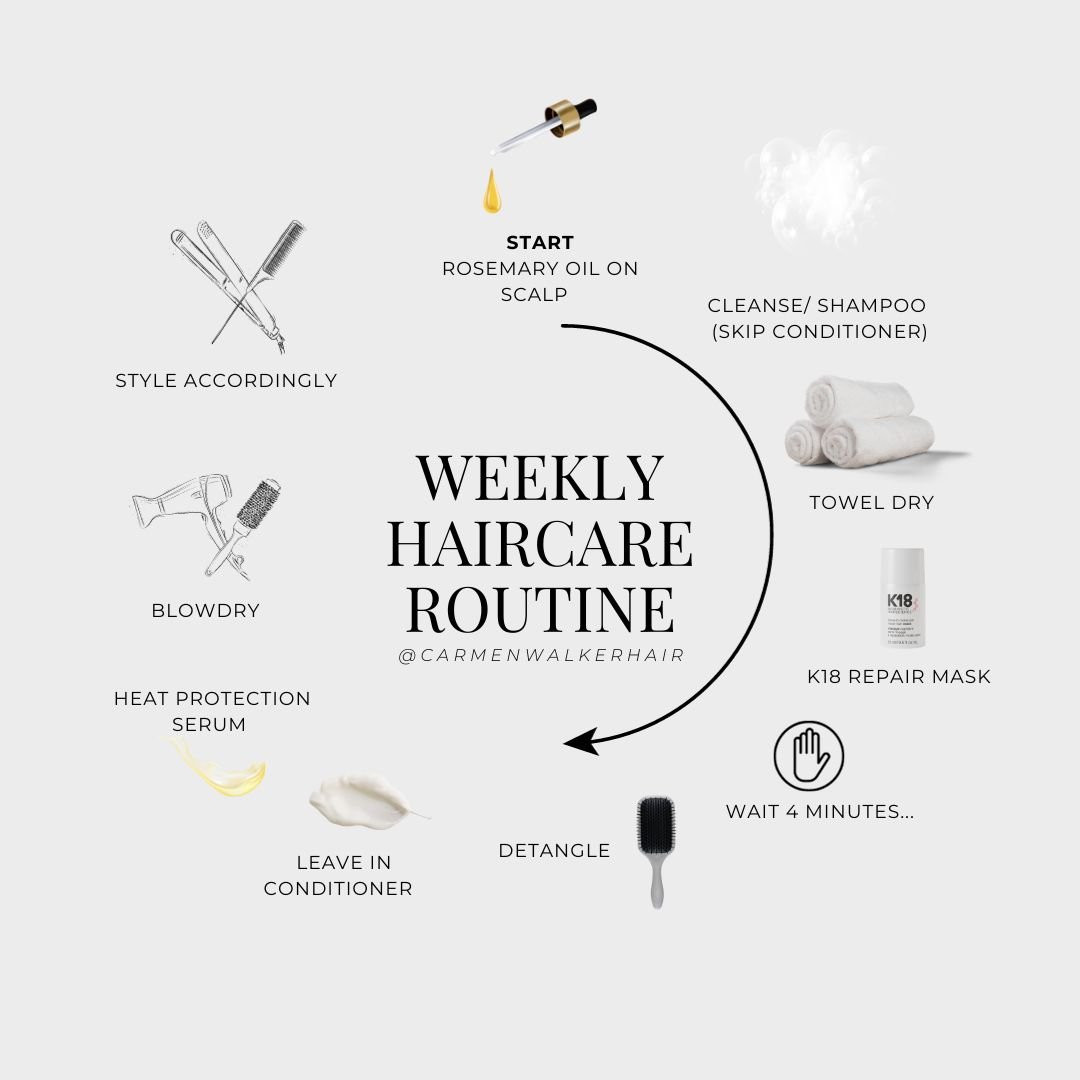
















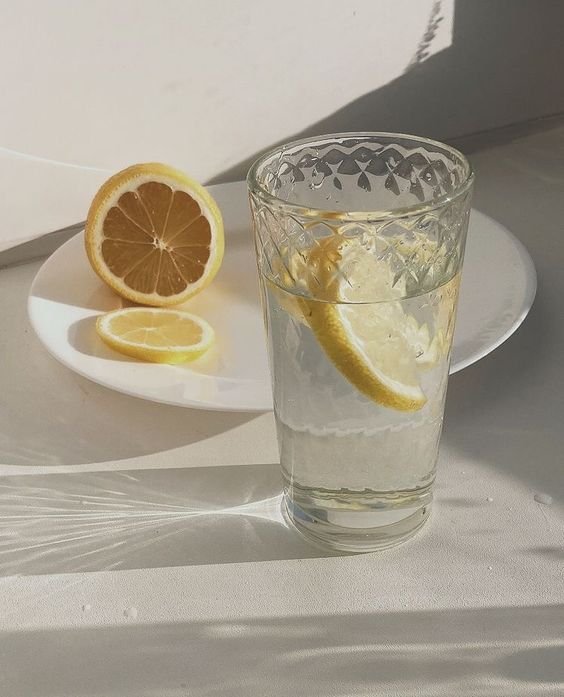

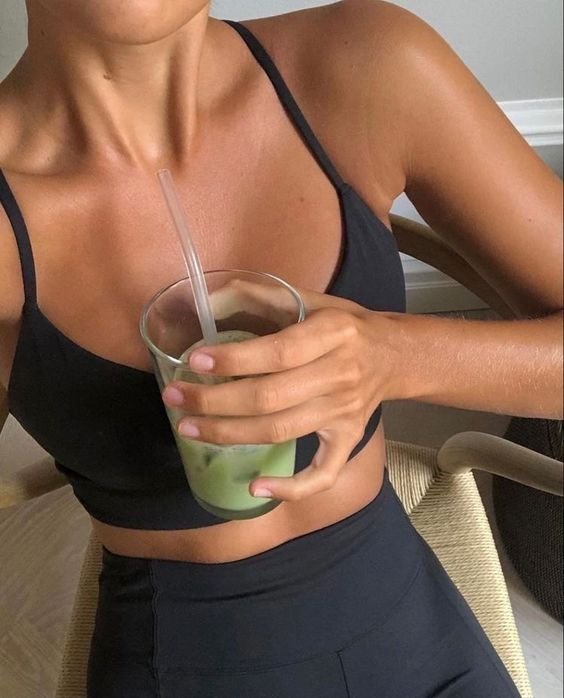


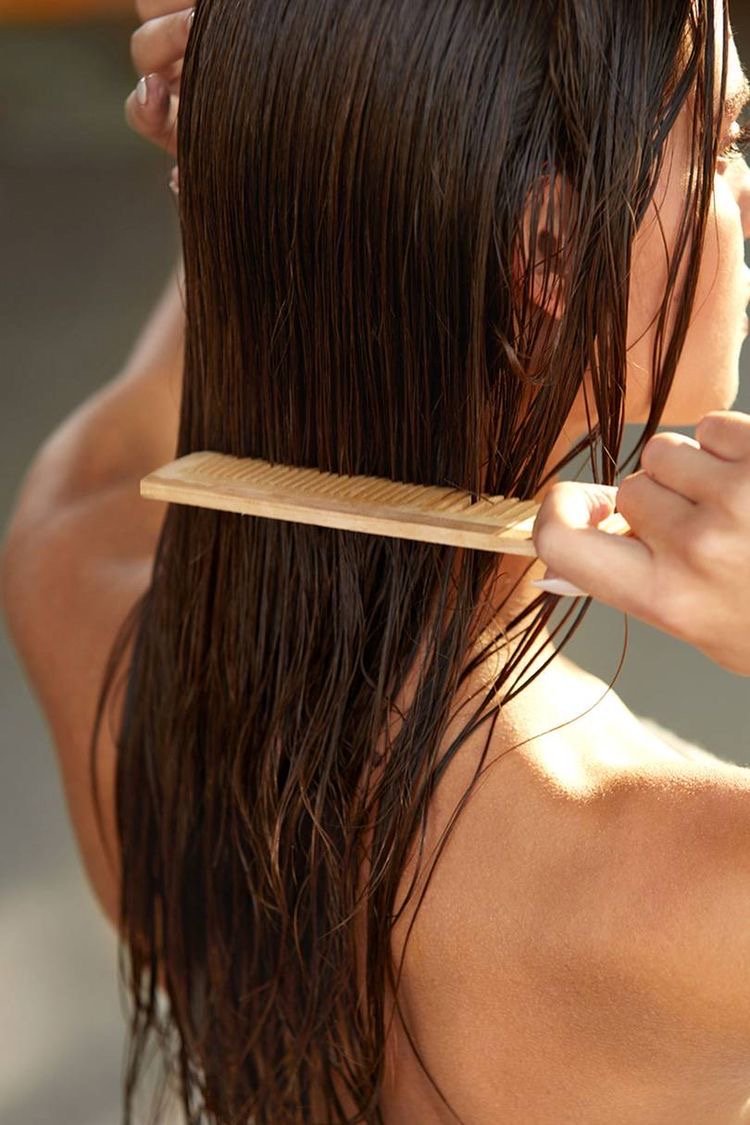
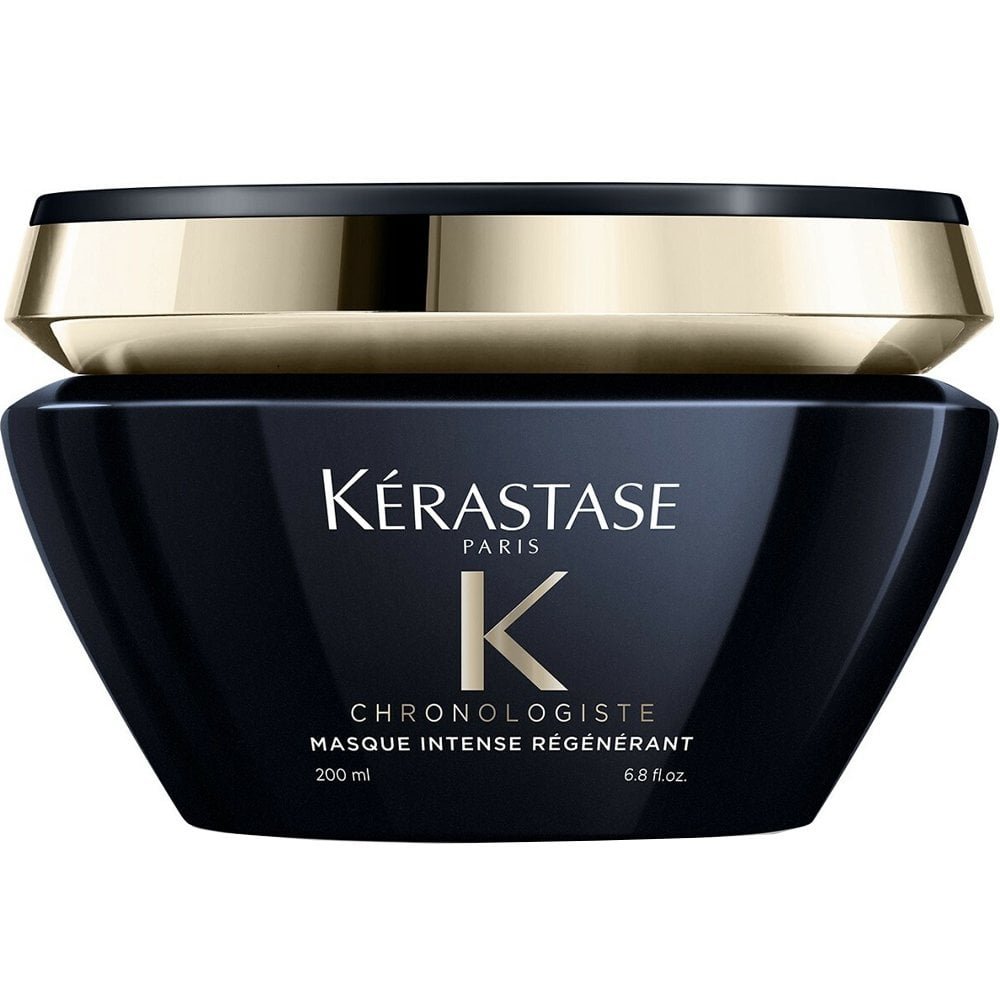
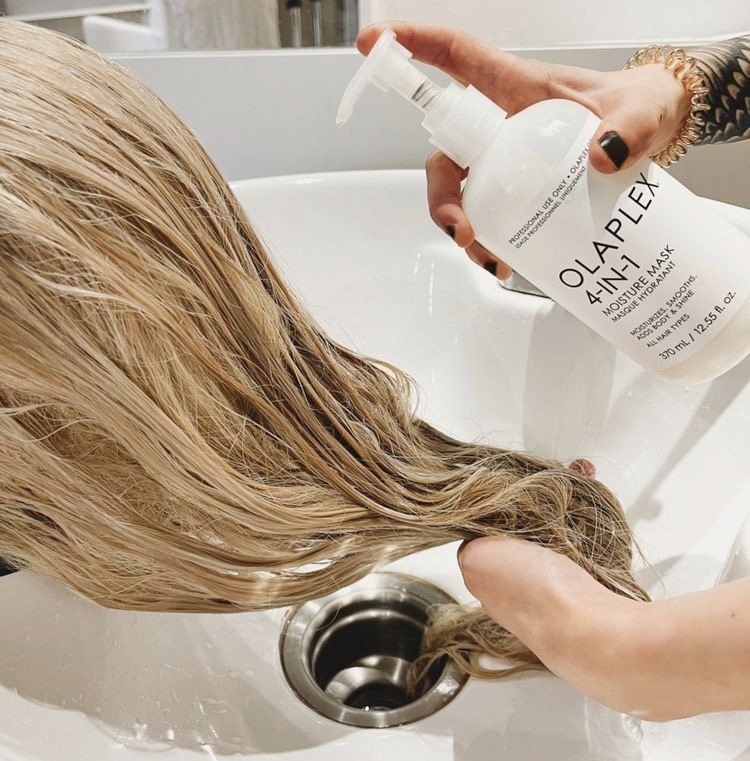








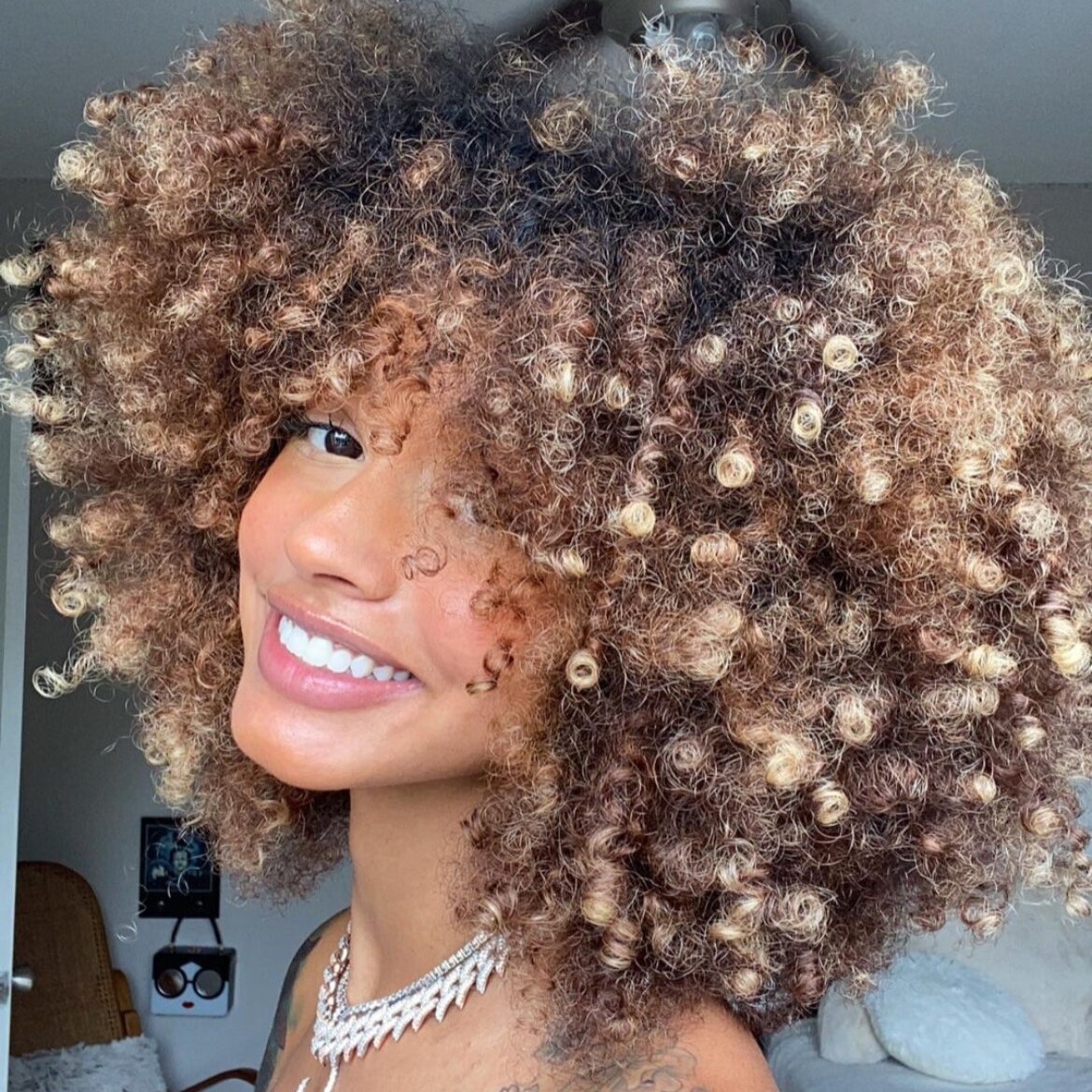








Experiencing menopause is a natural and inevitable phase of a woman's life, marked by a series of hormonal changes that can have far-reaching effects on various aspects of health. One often-overlooked aspect is its impact on hair health. Just as menopause changes mood, sleep patterns, and metabolism, it can also lead to shifts in the texture, thickness, and overall condition of your hair.